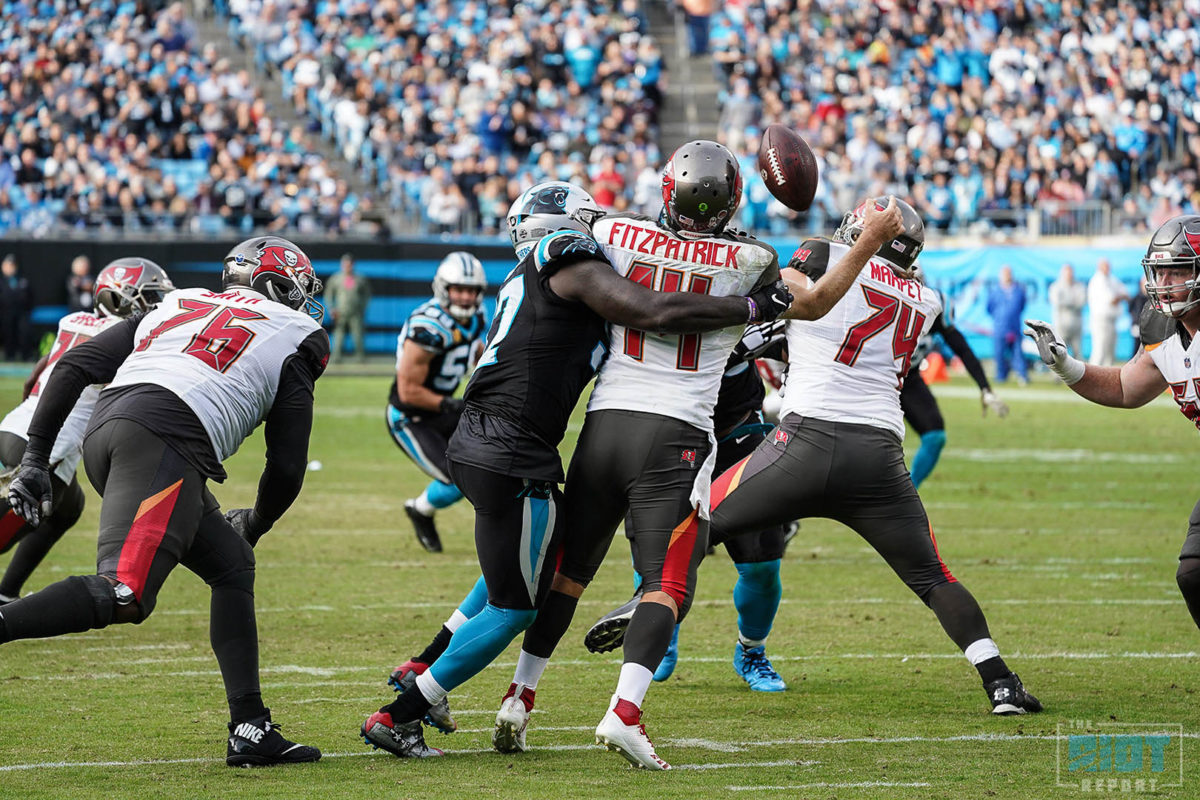Don’t let a terrible showing on Thursday night fool you.
There are a lot of things going well for the Panthers right now – they are sitting at 6-3 with a real chance of making the playoffs, they have a variety of offensive weapons across a range of positions, their secondary is the strongest it has been in recent memory, they have one of the best linebacker corps in the NFL and a future Hall of Famer at quarterback. Heck, even the offensive line has played quite well on the whole as despite the dressing-down they experienced against the Steelers – they still rank 11th in sack percentage allowed for the season and the Panthers’ running game ranks behind only that of the all-conquering Rams.
In fact, the only area where the Panthers have been less-than-impressive has been their pass defense; they rank dead last in touchdowns allowed, 26th in completion percentage allowed and, despite ranking seventh in interception percentage, 25th in passer rating allowed. So why is this defense struggling despite no shortage of talent?
A key part of any pass defense is the pass rush, as almost any quarterback will be able to find an open receiver if given enough time – while it wouldn’t be fair to blame all of the defensive struggles on the pass rush, it certainly seems to be a sensible place to start in exploring the Panthers’ pass defense issues. What is important to note is not that the Panthers’ pass rush has been bad consistently, but rather bad at being consistent. Inconsistency is one of the hardest things to deal with from a coaching perspective, as it speaks not to a lack of talent but rather to a lack of either mental preparation or effective usage. To this end, this article will explore what the Panthers’ pass rush did well and what it didn’t in two of their best games of the season against Dallas and Tampa Bay; two of their worst games of the season against Atlanta and Cincinnati; and what was different about their performances in these two pairs of games. Cue the music…
Numbers, Numbers, Numbers…
The key to data drive analytics is, well…data; so before going into the tape in detail, it is worth looking at the numbers that make up the Panthers pass defense – and pass rush in particular – during these four games. In order to compare the performance in the games where things went well and the games where they went badly, the two data sets are presented separately. First, the data for the Tampa Bay and Dallas games:
Areas where the Panthers held teams to a completion rate of under 50% are highlighted in green, as are areas where the Panthers had a pressure rate of over 50%. Similarly, areas where the Panthers allowed a completion rate of over 60% are highlighted in red, as are areas where their pressure rate was below 50%. Areas where they allowed a completion rate between 50-60% or where their pressure rate was exactly 50% are highlighted in yellow. Now for the Cincinnati and Atlanta games:
What should come of little surprise is that there is less green on the latter set of data than the former, but there are some things which carry over form one set of data to the other. First, despite the Panthers’ struggles against Atlanta and Cincinnati there were still some things that they continued to do well, most notably how they defended plays where the offenses kept in additional blockers. Despite having more players in to pass protect, the Panthers were able to get consistent pressure against these blocking schemes, even off of play-action fakes. What changed between the good and bad games in this regard is that the opposing offenses were able to complete passes despite the pressure.
Similarly, there were also some things that the Panthers struggled with even in the games where their pass rush was effective. Most of these issues were focused around play action and RPOs, with the Panthers struggling in these areas in all of the games studied. This was particularly true for roll-out plays, RPOs and plays where the offense kept limited blockers in after the run fake. While the Panthers did generate one interception off of an RPO, they allowed a completion percentage in the 70s on these plays; one major difference between the good games and the bad games was simply the number of these plays that the opposing offenses ran. The Falcons in particular used a lot of roll-outs to great effect against the Panthers as well as having success on RPOs despite Matt Ryan’s lack of running prowess. As long as the Panthers have systemic weaknesses in this area, it is always going to be hard for them to have a consistent pass rush week on week.
Finally, there were also some areas where the Panthers simply didn’t do as well in their bad games as in their good games. They struggled to stop the offense when they went to max protection on play action, when they didn’t use any additional blockers in pass protection and when they looked to get the ball out quickly – such as by using three-step drops to limit the Panthers’ pass rush. In short, these are the areas where the inconsistency seeps into the Panthers’ pass rush, and where there is the most hope of immediate improvement as they have shown they can do these things, just not on a consistent basis. So with all that said, what is it the Panthers do and don’t do that leads to the numbers shown above; and what can they do to limit their inconsistencies and fix their persistent issues?
Let’s start with what they did well.





